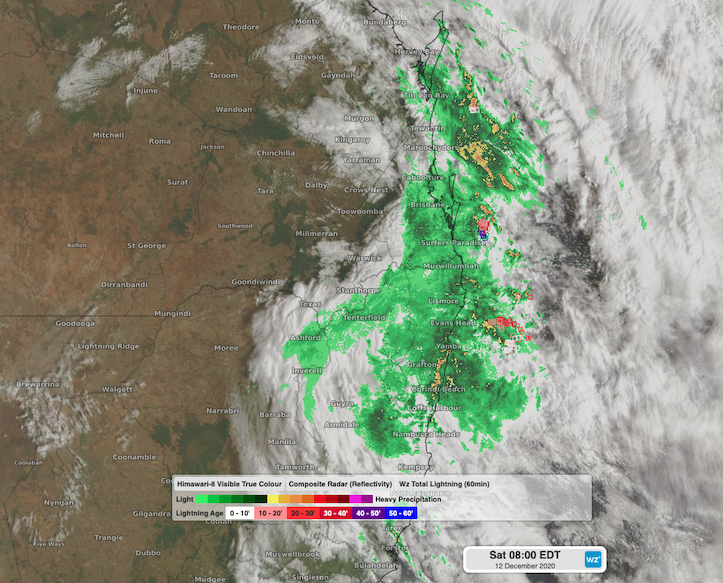Heaviest rain in months for southeast QLD and northeast NSW, and more on the cards
Cold air aloft combined with vigorous onshore winds is bringing almost a month's worth of rain in just one day and strong winds to multiple places in northeast NSW and southeast QLD.
The heaviest falls were registered during Friday night and Saturday morning over northern parts of Mid North Coast and southern parts of Northern Rivers in NSW, and over Southeast Coast in QLD.
Coffs Harbour, which collected 151mm in the 24 hours to 9am on Saturday, saw its wettest day since June 2016. This torrential rain nudged the entire monthly average of 174mm. Ballina (89mm) and Lismore (43mm) registered their heaviest falls in 10 months and wettest December day since 1994 and 2014, respectively.
Widespread rain also affected southeast Queensland. Sunshine Coast Airport (93mm) had its wettest December day in 13 years. Further south, rain was more modest with Coolangatta and Brisbane picking up 29 and 13mm, respectively. However, Coolangatta's daily total of 29mm had not been exceeded since July.
 Himawari-8 Visible satellite image with radar and lightning overlay showing widespread rain over northeast NSW and southeast QLD Saturday morning
Himawari-8 Visible satellite image with radar and lightning overlay showing widespread rain over northeast NSW and southeast QLD Saturday morning
Soaking rain is not over yet. A low pressure system will likely form off the southeastern Queensland coast during Sunday evening, leading to a second round of heavy rain starting in southeast QLD Sunday night and Monday morning and moving into northeast NSW during Monday afternoon.
Apart from heavy rain and the subsequent floods, this system is also producing strong winds, abnormally high tides, and hazardous surf. Keep track of the latest weather warnings issued and weather stories for the most up-to-date information on this dangerous system.